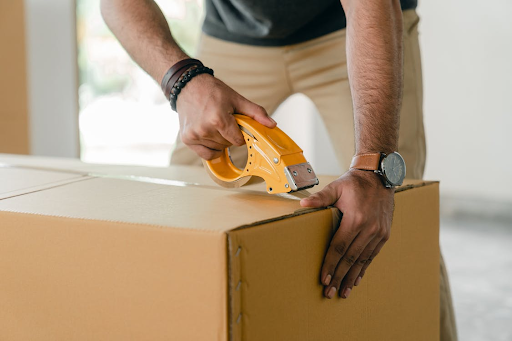
In an age of rapid technological advancement, automation and robotics are revolutionizing industries across the board, and the self-storage sector is no exception. As the demand for secure and efficient storage solutions continues to grow, self-storage facility operators are increasingly turning to automation and robotics to enhance operational efficiency, streamline customer service, and provide a superior storage experience. This comprehensive guide aims to explore the future of self-storage, focusing on the adoption of automation and robotics in facility management, and the profound impact it will have on the industry.
The Rise of Automation in Self-Storage
Automation, encompassing a wide range of technologies and systems, has been gaining traction in the self-storage industry, offering facility operators the ability to optimize various aspects of facility management. From security and access control to rental processes and maintenance tasks, automation solutions are reshaping the way self-storage facilities operate and interact with customers.
One of the key areas where automation has made a significant impact is in the implementation of advanced security and access control systems. High-tech access control solutions, such as biometric scanners, keyless entry systems, and RFID technology, are increasingly being integrated into self-storage facilities, providing customers with secure and convenient access to their storage units while minimizing the risk of unauthorized entry.
In addition to security, automation has also streamlined the rental and payment processes for tenants. Self-service kiosks and online rental platforms have simplified the leasing process, allowing customers to easily select, rent, and manage their storage units without the need for extensive staff intervention. This not only enhances customer convenience but also reduces the administrative burden on facility operators.
Moreover, maintenance tasks within self-storage facilities are also being revolutionized by automation. From smart climate control systems that optimize energy usage to automated inventory management solutions that streamline restocking processes, the integration of automation technologies is driving operational efficiency and cost savings for facility owners.
The Role of Robotics in Self-Storage Facility Management
In addition to automation, the integration of robotics holds immense potential for transforming the landscape of self-storage facility management. Robotics, including automated guided vehicles (AGVs), drones, and robotic assistants, are being leveraged to perform a wide array of tasks, ranging from inventory management to facility maintenance, with unprecedented precision and efficiency.
Drones are also emerging as valuable tools for conducting facility inspections, surveillance, and security monitoring. Equipped with high-resolution cameras and advanced sensors, drones can efficiently navigate through the facility, providing real-time visual assessments of the premises while surveying inaccessible or hard-to-reach areas. This enhanced aerial perspective empowers facility operators to maintain a comprehensive overview of their properties, identify potential issues, and respond proactively to security concerns.
Robotic assistants, powered by artificial intelligence and machine learning algorithms, are another significant development in the realm of self-storage facility management. These intelligent robots can be designed to perform a variety of tasks, including customer assistance, inventory management, and facility maintenance. By employing robotic assistants, self-storage operators can enhance the customer service experience, automate routine operational duties, and allocate staff resources more effectively.
The Beneficial Impacts of Automation and Robotics
The integration of automation and robotics in self-storage facility management offers a plethora of benefits for both facility operators and customers alike. From improved operational efficiency to enhanced security measures, the adoption of these technologies is poised to reshape the industry in several compelling ways.
First and foremost, automation and robotics enable self-storage businesses to operate more efficiently and cost-effectively. With streamlined processes for rental, access control, and maintenance, facility operators can reduce their administrative workload, optimize resource allocation, and enhance the overall productivity of their operations, ultimately leading to improved bottom-line performance.
In terms of security, automation and robotics play a critical role in fortifying the safety and protection of stored belongings. Advanced access control systems and surveillance technologies offer unparalleled safeguards, ensuring that customers’ valuables are fully secure within the facility. Robotics, such as drones and automated security patrols, further augment the vigilance and responsiveness of security measures, mitigating potential risks and enhancing peace of mind for tenants.
Furthermore, the adoption of automation and robotics fosters a more seamless and convenient experience for customers. By providing self-service rental options, keyless access, and automated customer support services, self-storage facilities can deliver a user-friendly, on-demand storage solution that meets the evolving expectations of modern consumers.
The Future Outlook and Considerations
As the self-storage industry continues to evolve, it is evident that the integration of automation and robotics will play an increasingly prominent role in shaping the future of facility management. This transformation, however, necessitates careful consideration of several key factors to ensure a successful transition and utilization of these technologies.
For self-storage operators, investing in automation and robotics requires comprehensive planning, diligent integration, and ongoing maintenance to maximize the benefits of these technologies. This entails evaluating the unique operational needs of the facility, selecting appropriate automation and robotic solutions, and providing adequate training to staff for seamless adoption.
Additionally, facility operators must prioritize cybersecurity measures to safeguard the integrity of automated systems and protect sensitive customer data from potential threats. Robust security protocols and regular vulnerability assessments are crucial for fortifying the digital infrastructure of self-storage facilities and maintaining the trust of tenants.
Moreover, as automation and robotics become more prevalent in the self-storage industry, it is important for operators to maintain a balance between technological advancement and human-centric service. While these technologies are invaluable for optimizing efficiency and security, the human touch in customer interactions and facility management remains an essential aspect of delivering a personalized and responsive storage experience.
In conclusion, the future of self-storage is undeniably intertwined with the integration of automation and robotics in facility management. These technologies are poised to elevate operational standards, enhance security measures, and deliver unparalleled convenience for customers. By embracing these advancements and navigating the associated considerations, self-storage operators can position themselves at the forefront of innovation, driving the industry toward a more efficient, secure, and customer-centric future.
